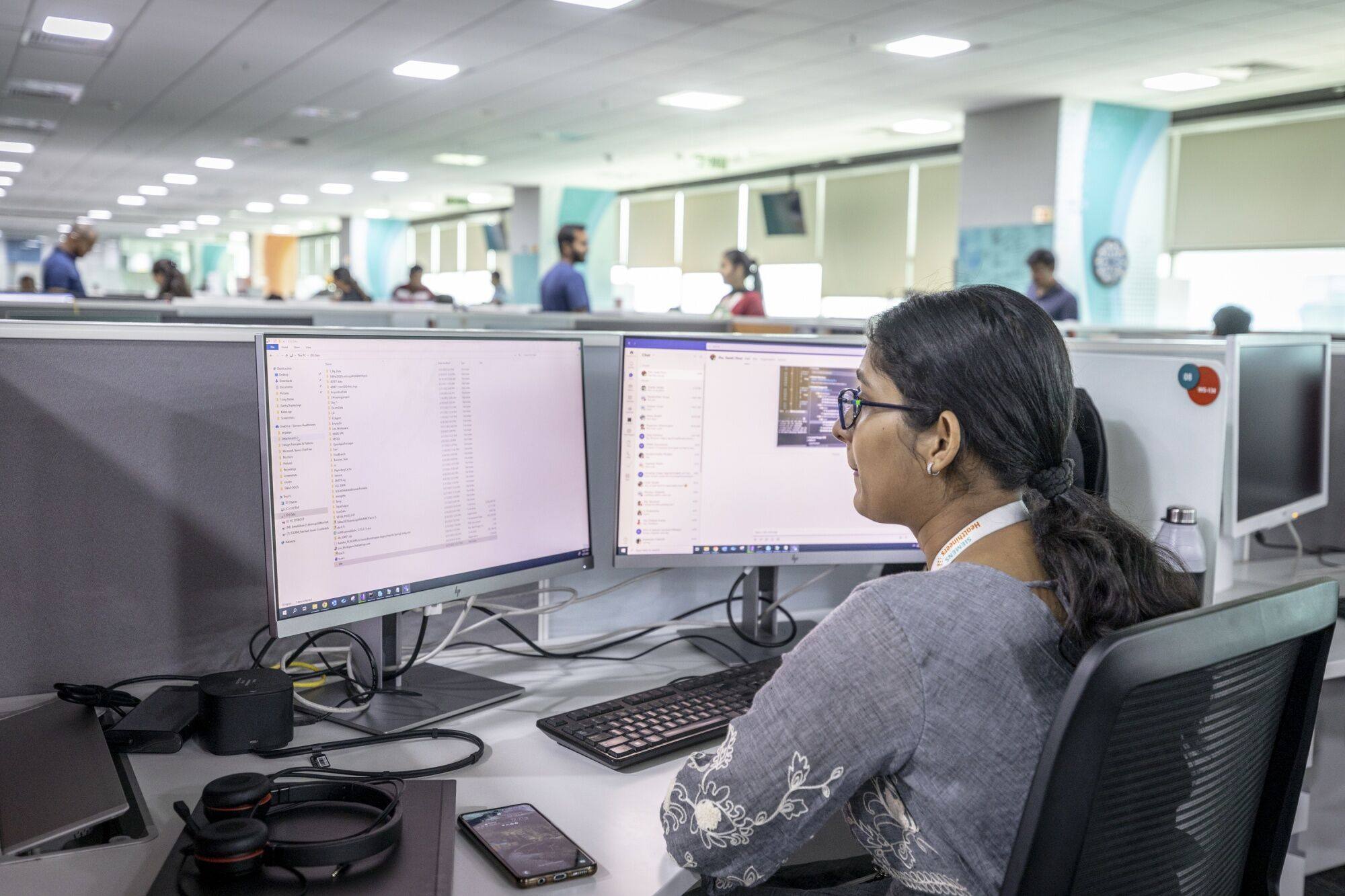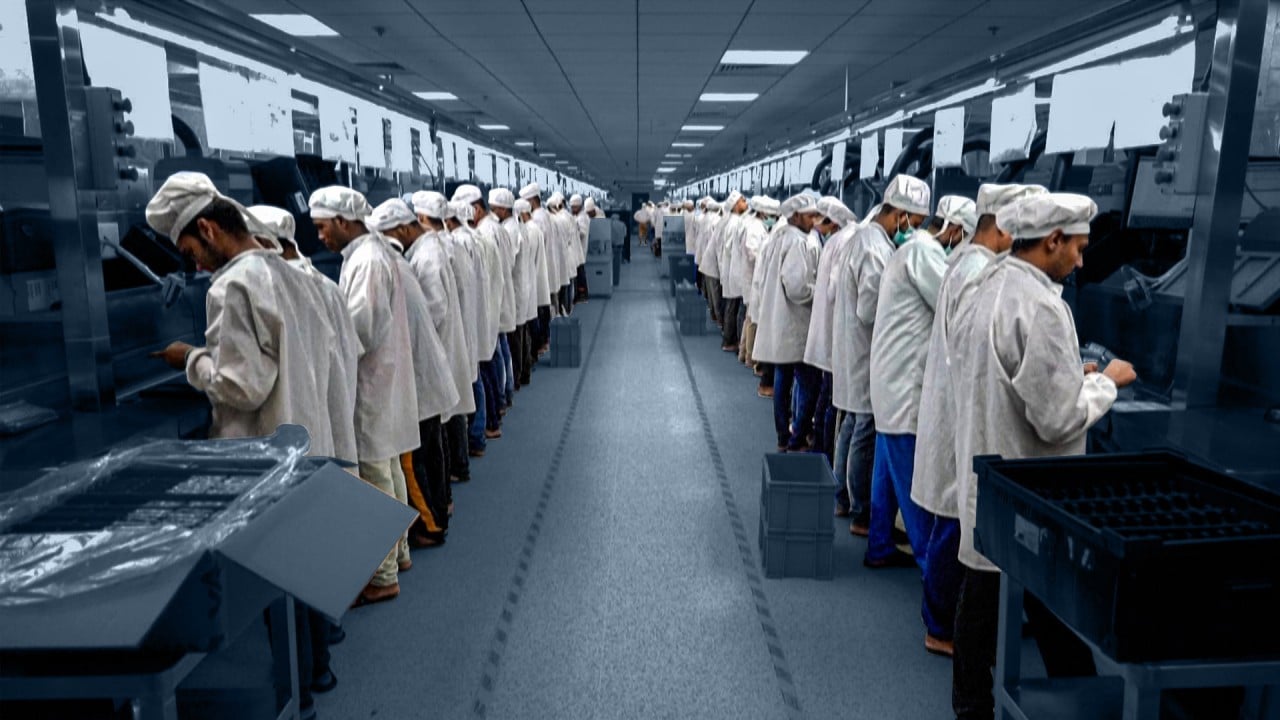India hopes for a digital economy, but can it train 560 million young workers?
[ad_1]
Unlike Manisha, however, not everybody can unlock their potential.
India’s ability to nourish the ambitions of its youth and tap into its so-called demographic dividend is shaping up to be one of the biggest challenges the country is facing to retain its global reputation as the world’s tech hub and woo other firms worldwide.
Success means realising ambitions of building a US$1 trillion digital economy, but failure could imply social unrest among a wave of unemployed youth.
India has not conducted a population census since 2011, but a February article by the Pew Research Center estimated India to have more than 1.4 billion people – greater than the entire population of Europe (744 million) or the Americas (1.04 billion).
India’s population is expected to surpass 1.5 billion by the end of this decade and peak at 1.7 billion in 2064, based on a UN “medium variant” projection.
Indian teen’s app builds ‘self-confidence’ in youth to overcome cyberbullying
Indian teen’s app builds ‘self-confidence’ in youth to overcome cyberbullying
People under the age of 25 account for more than 40 per cent of India’s population, which translates to roughly one in five people globally in that age group. The World Population Prospects’ revised 2022 report said the average age of Indians in 2020 was 29, compared to 37 for China and 48 for Japan. The number of children under five peaked in 2007, but has since been falling.
The challenge has acquired greater urgency with the advent of artificial intelligence (AI) which is expected to make mundane tasks redundant in the near future. The answer, according to analysts, is to upskill the youth population to open vast new opportunities, especially in remote areas, as well as overcoming differences in accessibility and training standards across diverse states.
“India is a huge, complex and difficult country. Just because perfection is not available today, we should not stop,” said Kirti Seth, CEO for IT-Information Technology Enabled Services Skills Council at NASSCOM (National Association for Software and Service Companies).
Upskilling tools
Prime Minister Narendra Modi’s government has started putting the bricks and mortar in place for a policy to drive mammoth upskilling, but it faces an onerous task, analysts say.
India introduced a New Education Policy this year to provide quality and equitable education for ages three to 18, shifting its focus from rote learning to problem-solving. It also aims to expose middle-school students to future technologies such as AI.
The federal government is also banking on a two-pronged approach – partnering with the industry to expand outreach as well as shifting training and recruitment programmes online for easy access.
Other initiatives include empowering youth through a Skills India programme and launching the online platform ONEST (Open Network for Education and Skilling Transactions) that links individuals and organisations for jobs.
Despite India’s economic growth, few jobs for youth
Despite India’s economic growth, few jobs for youth
India’s pivot towards building a digital education and training backbone is in its infancy, but there are signs it could succeed with a suitable blend of learning.
Three years ago, the government partnered with NASSCOM to oversee and implement a Future Skills programme that offers online courses in technologies such as ChatGPT to kindle interest for higher skills. About 85 per cent of those enrolled are now from smaller towns, Seth said.
That appears to be now paying dividends in even jobs by global and domestic companies who previously scoured for talent mostly in seven big cities.
“What we are seeing interestingly is that there is a desire to hire from tier 2, tier 3 cities,” Seth noted, adding that companies had realised the “the quality of the manpower in other cities is not bad at all”.
A NASSCOM report last year said India has a demand supply gap of 21.1 per cent for futuristic technologies such as AI, machine learning and robotics, which is among the world’s lowest.
Industry executives say bridging the gap would be crucial for technologies such as AI where the country ranks a distant third behind the United States and China.

Bridging the digital divide
The United Nations Development Programme warned in a report last Monday that the Asia-Pacific region was lurching towards an era of unmet aspirations, worsening inequalities, and a steady erosion of democratic spaces. Particularly in South Asia, wealth disparities have worsened, with the wealthiest 10 per cent controlling over half of total income, it added.
Nearly a quarter of India’s youth, or 23.22 per cent, aged between 15 and 24 were unemployed in 2022, a World Bank report in September showed.
Educationists say the Indian industry’s spread is uneven and may not tally with areas with the highest youth population.
According to an Observer Research Foundation article in April, the share of employment in India’s agriculture sector stands at 43 per cent compared to 25 per cent in China and less than 2 per cent in the US. If India were to reduce agricultural employment to 15 per cent, it would have to create 93 million jobs over the next 25 years.

Mekin Maheshwari, co-founder of Udhyam Learning Foundation, which works with 10 state governments to nurture an entrepreneurial mindset among students in middle and senior grades, said the size and scale of India’s youth population required a comprehensive response.
“There is no one entity that can provide it,” he said. “Economically productive opportunities are essential for young people and the lack of it will leave them rudderless and in despair. That is something I definitely see happening around me.”
Maheshwari said expanding the manufacturing sector alone would not be able to match job needs, so their organisation focused on building entrepreneurs who could expand the circle of income opportunity.
While analysts welcome the steps towards improving young workers’ skills, they underscore glaring gaps that will need to be addressed to fully tap into the youth potential.
Demographic blessing or disaster? How Asia can reap its youth dividend
Demographic blessing or disaster? How Asia can reap its youth dividend
“We have to look at the end product and work backwards … There are sporadic efforts but there is not anything at mass scale which will transform the system,” said Venita Kaul, a former professor at India’s Ambedkar University, referring to the need for upskilling broadly.
She added that one of the biggest challenges with technology such as AI was job uncertainty. What will be required is for individuals “who are ready to learn, unlearn and learn and be constantly on the go”.
Kaul stressed that such attitudes should be honed in early education. “One has to look at the whole challenge systematically and comprehensively, which is not happening because education is a state [government] subject,” she said.
Southern Indian states are far more advanced in education than those in an underdeveloped belt comprising Bihar, Madhya Pradesh, Rajasthan and Uttar Pradesh, she pointed out.

Sudarshan Suchi, CEO at NGO Bal Raksha Bharat, a member of Save the Children International, said there had been a trend among young people in remote areas, sparked by the extensive reach of social media, to aspire for opportunities beyond their family tradition of farming.
Under a programme called the “Youth Innovation and Action Lab”, Suchi’s organisation identifies underdeveloped areas and works with small groups of youth by extensively preparing them to overcome social inhibitions and inferiority complex before imparting income skills.
“Technology and digital is the next big thing, [but] if it is taken blindly, it can become another [source of] inequality or oppression,” Suchi warned, highlighting that students from poor families suffered when only virtual classes were conducted during Covid-19 because they were unfamiliar with technology, lacked bandwidth and equipment.
“So, we need to invest in building digital capability and, you know, a certain accessibility,” he said.
[ad_2]
Source link


